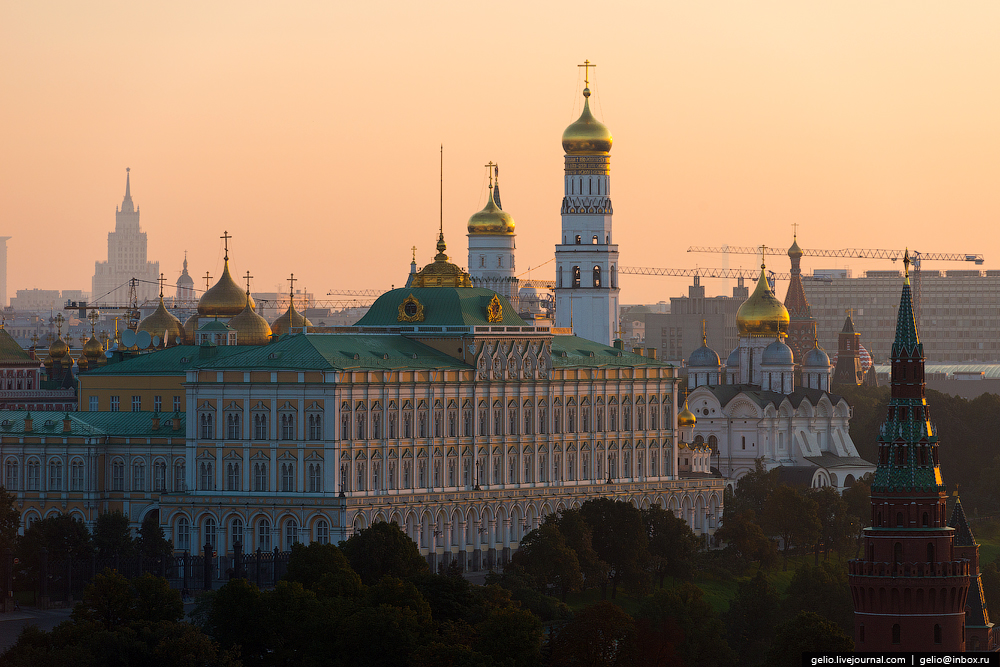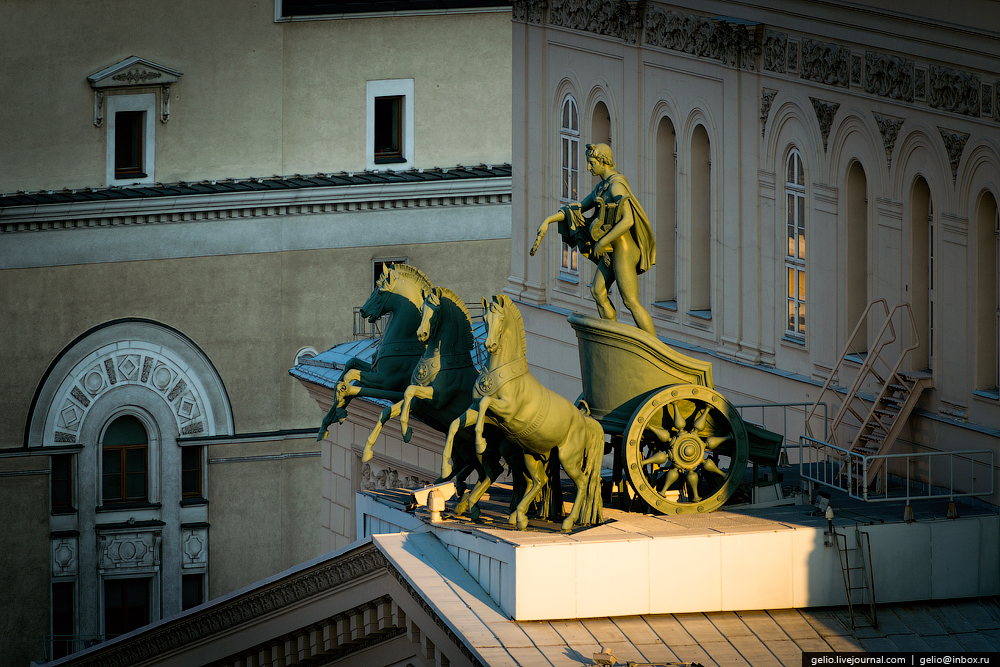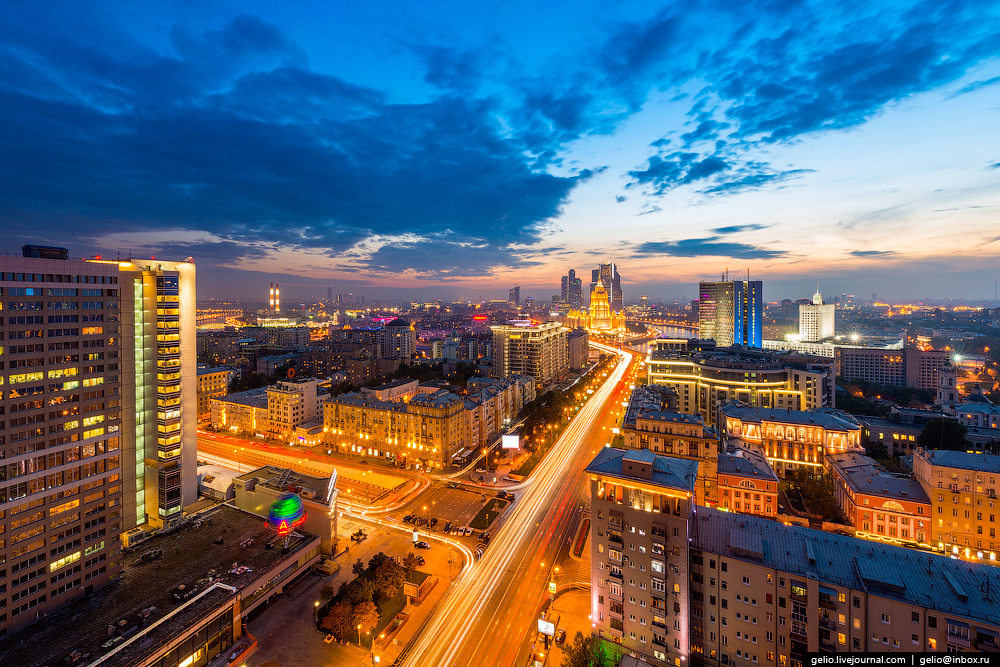
Тёрка в тагах
altai architecture arctic aviation bratsk bridge cherepovets chernyakhovsk cosmodrome elbrus gazprom gelio hpp icebreaker ind iran kaliningrad kamchatka komi krasnoyarsk magnitogorsk Moscow nature novosibirsk noyabrsk npp nso orenburg putorana railway report salekhard samara ships space tehran tiksi ukhta vorkuta yakutia yakutsk yamal
Большая Тёрка / Мысли / Личная лента Gelio /

Gelio

Moscow from above
Moscow is the capital of the Russian Federation. It is the most populous city in Russia. According to the official statistics, there are more than 12 million people living here. Based on this indicator, it is included in the ten largest cities in the world. Moscow is the financial, transport, logistic, business, cultural and tourist center of the country. The major attractions including the Kremlin, Red Square, the Bolshoi Theatre, Stalin’s skyscrapers and many other iconic objects are concentrated here.
Moscow is a city with monumental architecture: the real scope of the broad multi-lane streets, multi-level road interchanges and skyscrapers can be understood from a bird’s eye view.
The Moscow Kremlin is the geographical and historical center of Moscow. It is the most ancient part of the city. Nowadays it is the seat of the supreme bodies of state power of the Russian Federation and one of the main historical and artistic complexes of the country.
The Kremlin Embankment and Bolshoy Kamenny Bridge (Great Stone Bridge)
The Kremlin Panorama
Existing walls and towers were built in 1485-1495. The total length of the walls makes 2235 m.
There are 19 towers along the walls, and there is one more Kutafiya tower taken out of the walls.
The three towers on the corners have a circular cross section, and the rest towers are of a square section.
The highest tower is Troitskaya which is 80 meters high.
The Grand Kremlin Palace
The Grand Kremlin Palace was built in 1838-1849 at the order of Emperor Nikolay I by a group of Russian architects led by K.A. Ton. Nowadays it is used for state and diplomatic meetings and official ceremonies, and the palace itself is the official residence of the President of the Russian Federation.
Pokrovsky Cathedral (St. Basil's Cathedral) is one of the most famous sights of Russia. For many people it is a symbol of Moscow and the whole country.
It was built by Barma and Postnik from 1555–1561 on the order of Ivan the Terrible to commemorate the capture of Kazan.
The bronze monument to Kuzma Minin and Dmitry Pozharsky is located in front of the Cathedral.
The V.L.Lenin Museum
The State Historical Museum
The museum's collection reflects the history and culture of Russia from ancient times to the present days. It is unique in the number and variety of the exhibits.
Manezhnaya Square
The Fountain "Watch of the World." The main dome of the underground shopping complex "Okhotny Ryad".
Tverskaya street is the central street of Moscow.
The State Academic Bolshoi Theatre is one of the largest in Russia and one of the most significant opera and ballet theaters in the world.
The bronze quadriga above the entrance portico. The Bolshoi Theatre is shown in hundred-rouble banknotes.
The House on the Embankment
The residential complex of the Central Electoral Commission and Council of People's Commissars of USSR covers an area of 3 ha. 25 entrances are opened on two streets - Serafimovich street and the Bersenevskaya embankment. The history of the country is reflected in the history of the House as in a mirror. The fate of many people living in the House was tragic. During the Great Terror period nearly a third of its inhabitants suffered from repressions, disappeared in prisons and camps. Outstanding military leaders, heroes, artists, journalists, writers, academicians, leaders of the parties and the government, the Comintern employees lived in the House.
The State Department Store
This large shopping complex which occupies a whole block of China-town and faces Red Square. It is a monument of pseudo-Russian architecture of federal significance. It is leased to the Russian retailer Bosco di Ciliegi which specializes in the sale of luxurious goods until 2059.
The Central Department Store
The State Duma of the Federal Assembly of the Russian Federation
The building was constructed in 1938 for the Council of Labor and Defense. Later on, the Soviet government (the Council of People's Commissars, the Council of Ministers of the USSR) and then the State Planning Committee of the USSR were placed in this building. The State Duma has been here since 1994.
The White House - The Government House of the Russian Federation
The White House was severely damaged during the events of October 1993, when the troops summoned by President B.Yeltsin opened fire from tanks on the building defended by the supporters of the disbanded Congress of People's Deputies and Supreme Council of the Russian Federation.
Left: the former territory of the Krasny Oktyabr Chocolate Factory. Center: The Monument to Peter I byTsereteli.
Novy (New) Arbat
The Sadovoye (Garden) Ring Road
Borodinnsky Bridge across the Moskva river. The Smolenskaya and Taras Shevchenko embankments.
Stalin’s skyscrapers are the seven high-rise buildings built in Moscow in the late 1940s - early 1950s. High-rise buildings are the pinnacle of the postwar Soviet Art Deco style in urban architecture. All Stalin’s skyscrapers were laid down on the same day on September 7, 1947 celebrating the 800th anniversary of Moscow. It was a symbol of a new stage in the life of the ancient capital.
The main building of Moscow State University is the largest and highest building among all Stalin's skyscrapers.
There are 36 floors, and the height of the building with the spire reaches 240 meters. The building with the spire was the highest administrative and residential building in Moscow for many years, from 1953 until December 2003.
Residential House on the Kotelnicheskaya embankment
The house was being built in 1938-1940 and 1948-1952. The central building has 26 floors (32 floors together with technical floors) and has a height of 176 meters. The house accounts for 540 apartments.
High-rise Building on Krasnykh Vorot (Red Gates) Square
The method which had no analogues on the technical boldness and engineering ingenuity was applied for the construction of the base of the high-rise building on Lermontov Square. The fact is that the house, which was 138 meters tall, and the metro station Krasniye Vorota were being built at the same time. The designers faced a difficult problem: the multi-storey building would be located at the edge of the pit for a while, therefore, the soil would settle down unevenly, and the skyscraper would lean. Therefore, it was intentionally decided to build the house leaned. Before that, the soil around the perimeter of the pit was artificially frozen based on the technology of subway construction. When it melted, the building necked down and took a strict vertical position. Such a method was never applied due to the complexity of calculations.
Residential House on Kudrinskaya Square
The skyscraper was called the House for aviators, due to the fact that the employees of aviation industry were provided with apartments in it. The upper floors hosted the Committee for State Security’s special equipment to monitor the US Embassy which was located nearby on Novinsky boulevard.
Radisson Royal (former the Ukraina (Ukraine) Hotel)
The hotel was built in 1953-1957 and was named after the homeland of General Secretary Nikita Khrushchev. In April 2010 the hotel was opened after extensive restoration under the new name Radisson Royal.
Kutuzovsky prospekt starts from this building.
“Mosсow-City”
In 1992 there appeared the first projects of a multi-storey business center which was supposed to be built on the Presnenskaya embankment in Moscow.
This complex of buildings was named the Moscow International Business Center "Mosсow-City".
16 high-rise buildings must have been built on an area of 60 hectares representing an integrated complex of buildings with a single information space. The skyscrapers of "Mosсow-City" must have accommodated numerous offices, restaurants, hotels, congress halls, entertainment centers, shops, galleries and exhibition halls.
By the end of 2014 ten high-rise buildings have been built in "Mosсow-City", and 11 are being constructed or being completed. 15 buildings are skyscrapers (with a height of above 150 meters).
The average number of floors makes 54 floors at the moment.
The budget to purchase an apartment in "Mosсow-City" ranges within 1 or 2 million dollars.
Eurasia Tower. 70 floors, 309 meters.
Mercury City Tower. 75 floors, 339 meters.
The height of the skyscraper is 338.8 meters which made the tower to be the tallest skyscraper in Europe until September 25, 2014. The 75-storey tower Mercury City has left the London skyscraper “The Shard” (306 m) behind in a height which held the status of the tallest building in Europe only for 4 months. After the completion Mercury City has become almost 33 meters higher than its London rival.
In 2013 Mercury City won the prestigious International Property Awards in Europe 2013 in the “Best High-rise Architecture” nomination.
Tower on the Embankment. 59 floors, 268 meters.
The “Evolution” Shopping and Cultural Center. 54 floors, 255 meters.
The tower differs from all other projects in its unusual screw-like shape looking like a DNA molecule. The architect Tony Kettle together with Karen Forbes teaching nowadays in Edinburgh worked on the design of the project. The tower itself is a creative offspring of constructivism borrowing some traits of Tatlin's Tower which is dedicated to III International.
Ostankino Television Tower.
The construction lasted from 1963 to 1967. At that time it was the tallest building in the world (540 meters). Now it is the 8th highest freestanding building in the world.
The Panorama from Ostankino TV Tower
The View from a 503-meter Point of the Tower.
The idea of using prestressed concrete compressed with steel cables made it possible to design a simple, but robust structure of the tower.
Another progressive idea was to use a relatively small basement: according to the engineer N. Nikitin’s idea, the tower practically stands on the ground, and its stability is ensured by multiple mass excess of the cone-shaped basement over the mass of the mast construction.
Pobeda (Victory) Park
The memorial complex to commemorate the victory in the Great Patriotic War was opened on May 9, 1995 for the 50th anniversary of the Great Victory.
Belorusskaya Station
Komsomolskaya Square is the square of three stations, particularly, Leningradsky, Yaroslavsky and Kazansky railway stations.
Every year more than 30 million people depart from Moscow’s railway stations to other cities of Russia and foreign countries.
Kievsky Railway Station
Belorussky Railway Station
The Third Ring Road is one of the three ring roads of Moscow along with the Sadovoye (Garden) Ring and the Moscow Ring Roads.
Begovaya Street
The total length of the Third Ring Road is about 36 kilometers, about 19 kilometers of which are trestles, and about 5 kilometers are tunnels.
Khoroshevo-Mnyovniki district
Strogino district
Marfino district
Circular House at Dovzhenko street 6.
See also:
• Flying above the center of Moscow. Rehearsal for the Victory Parade
• Русская версия репортажа "Москва с высоты 2014"- Нет комментариев













































































